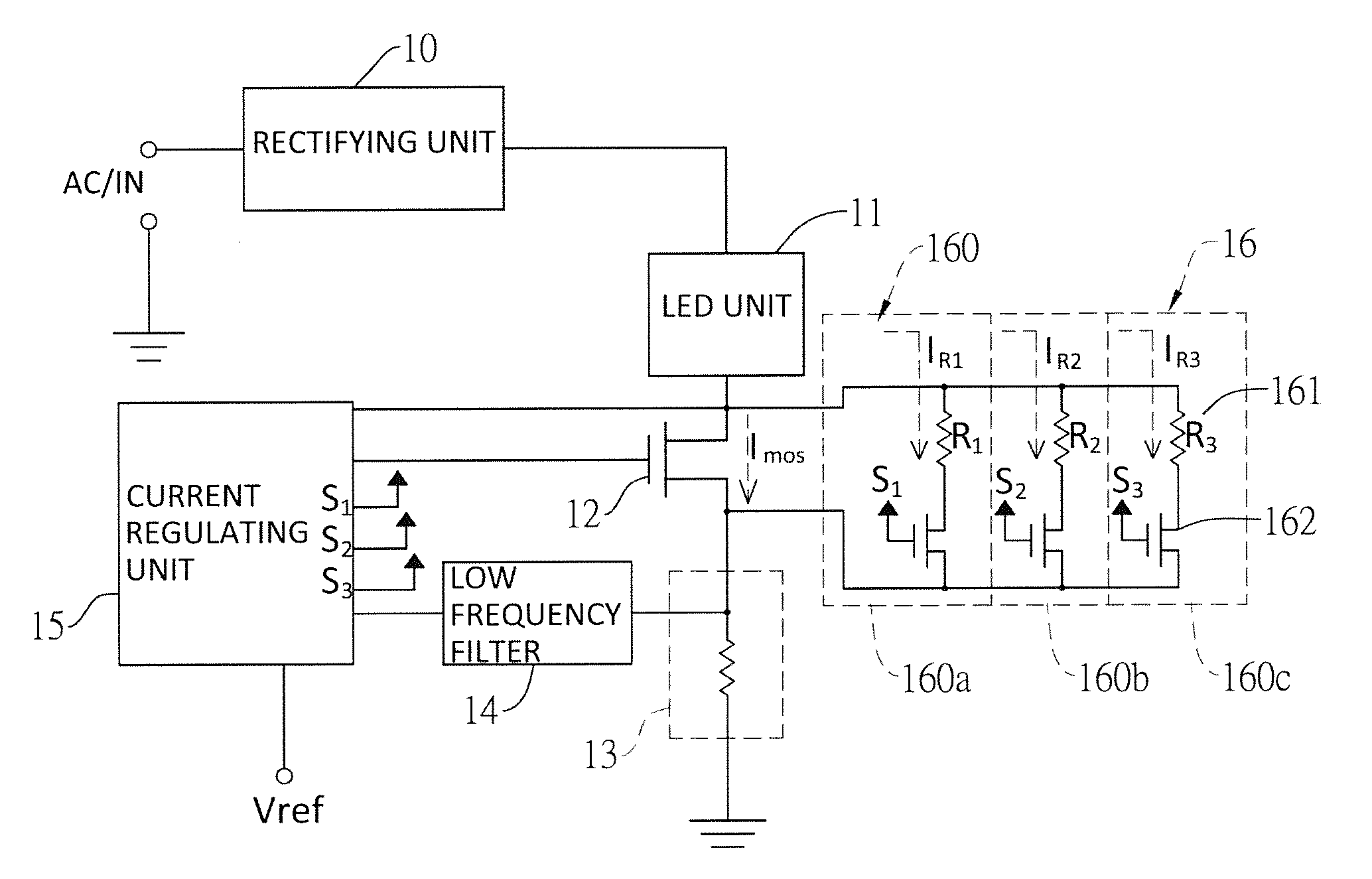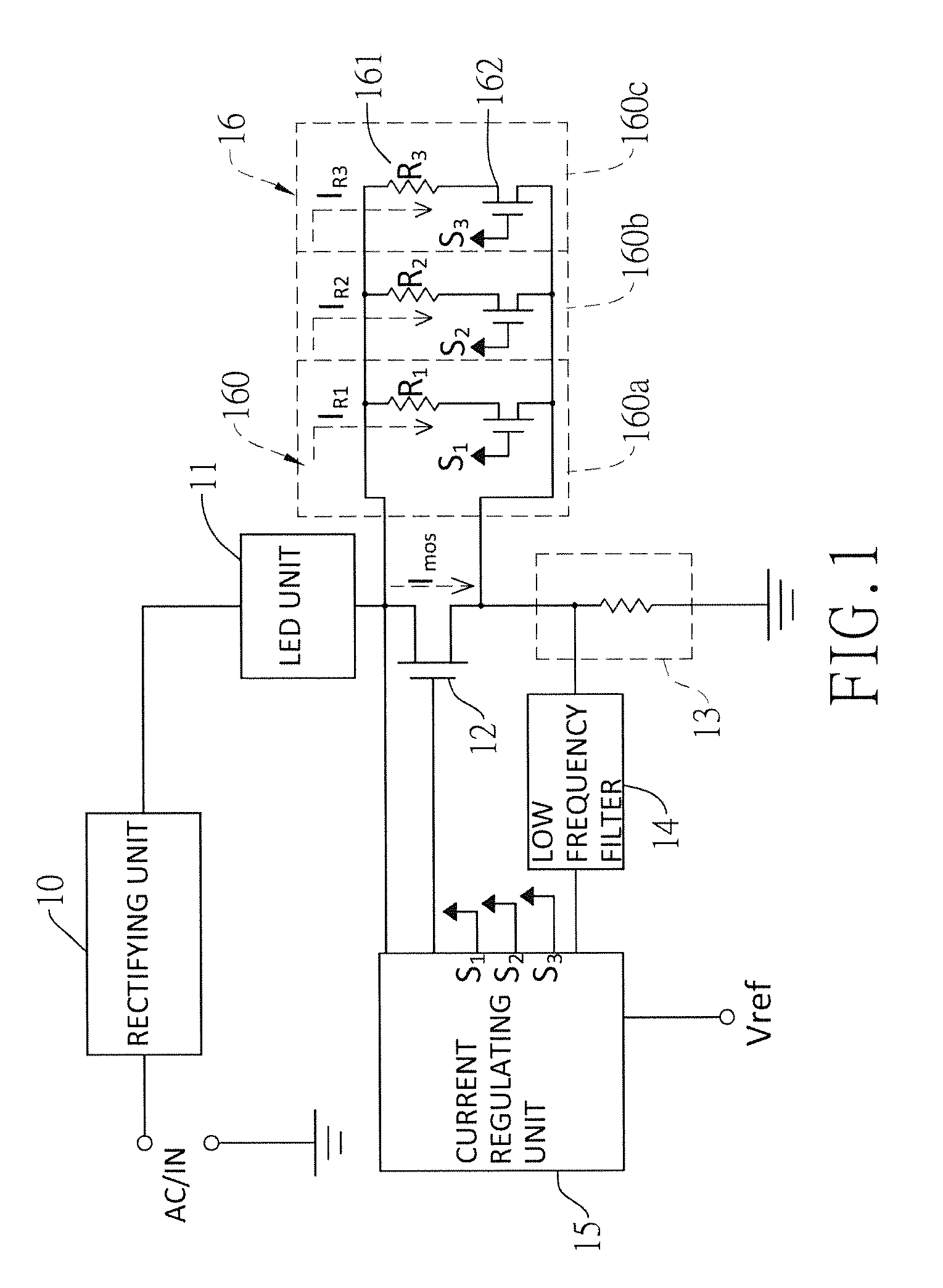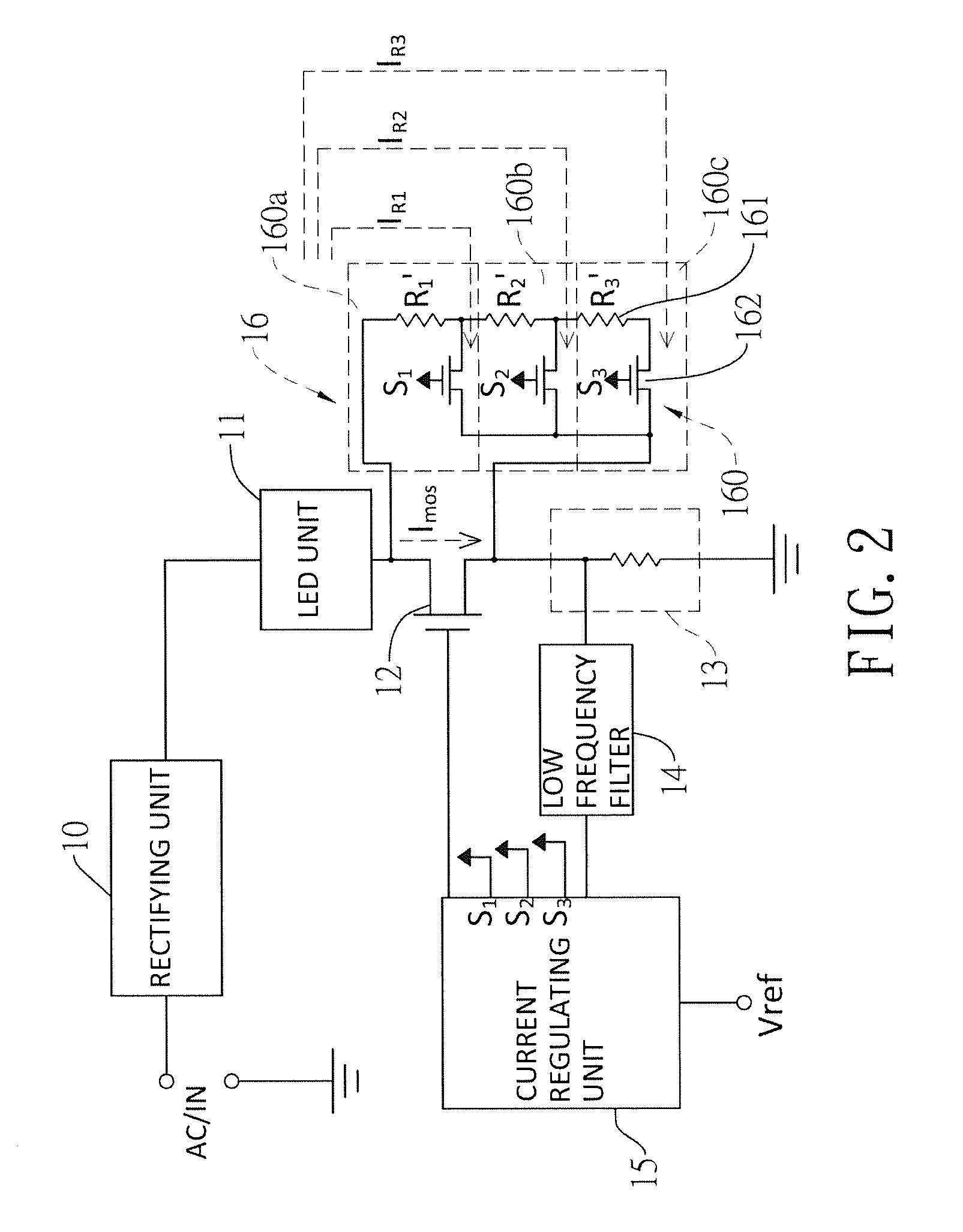LED AC driving circuit capable of adjusting operating voltage
a driving circuit and operating voltage technology, applied in the direction of electric variable regulation, process and machine control, instruments, etc., can solve the problems of voltage-controlled transistors b>22/b> encountering the problem of overheating, and conventional ac led driving circuits are unsuitable for particular applications with high operating voltages
- Summary
- Abstract
- Description
- Claims
- Application Information
AI Technical Summary
Benefits of technology
Problems solved by technology
Method used
Image
Examples
first embodiment
[0054]With reference to the first embodiment as shown in FIG. 1, the resistance adjusting unit 16 comprises a first, a second, and a third current-shunting unit 160a-160c connected in parallel. The resistances values R1-R3 of the three shunt resistors 161 are respectively 150, 180 and 220 ohms. Each shunt resistor 161 connects its first end to the respective control transistor 162, and its second end to the drain of the voltage-controlled transistor 12. The sources of all the control transistors 162 and the voltage-controlled transistor 12 are connected together.
[0055]In the first embodiment, the detecting terminal of the current regulating unit 15 is connected to the node between the LED unit 11 and the voltage-controlled transistor 12. The current regulating unit 15 calculates the operating power of the voltage-controlled transistor 12 by referring to the operating voltage of the voltage-controlled transistor 12 currently detected at the detecting terminal, and also referring to t...
second embodiment
[0058]With reference to the second embodiment as shown in FIG. 2, the three shunt resistors 161 are connected in series. The first shunt resistor is connected between both the drains of the voltage-controlled transistor 12 and the control transistor 162 of the first current-shunting unit 160a. The second shunt resistor is connected between both the drains of the two control transistors 162 of the first and second current-shunting units 160a, 160b. The third shunt resistor is connected between both the drains of the two control transistors 162 of the second and third current-shunting units 160b, 160c.
[0059]All the sources of the control transistors 162 are connected to the source of the voltage-controlled transistor 12. The resistance values R1-R3 of the three shunt resistors 161 are respectively 150, 30 and 40 ohms.
[0060]In the second embodiment, the input terminal of the current regulating unit 15 also acts as the detecting terminal thereof. When the operating voltage of the volta...
third embodiment
[0066]With reference to the third embodiment as shown in FIG. 3, a power detecting resistor 17 is added between the LED unit 11 and the current detecting unit 13. The current regulating unit 15 further has a second detecting terminal and a third detecting terminal. The second detecting terminal is connected to a node between the voltage-controlled transistor 12 and the power detecting resistor 17. The third detecting terminal is connected to another node between the LED unit 11 and the voltage-controlled transistor 12.
[0067]The second input terminal and the third input terminal are connected to the voltage-controlled transistor 12 in parallel to detect the operating voltage of the voltage-controlled transistor 12. Because the power detecting resistor 17 is connected in series to the voltage-controlled transistor 12, the current going through the voltage-controlled transistor 12 is detectable at the detecting terminal. The current-regulating unit 15 can calculate the operating power ...
PUM
 Login to View More
Login to View More Abstract
Description
Claims
Application Information
 Login to View More
Login to View More - R&D
- Intellectual Property
- Life Sciences
- Materials
- Tech Scout
- Unparalleled Data Quality
- Higher Quality Content
- 60% Fewer Hallucinations
Browse by: Latest US Patents, China's latest patents, Technical Efficacy Thesaurus, Application Domain, Technology Topic, Popular Technical Reports.
© 2025 PatSnap. All rights reserved.Legal|Privacy policy|Modern Slavery Act Transparency Statement|Sitemap|About US| Contact US: help@patsnap.com



